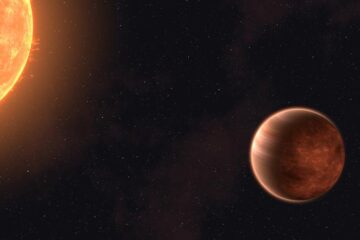Novel Method for the Creation of Autostereoscopic Images

<strong>Background</strong><br>
Lenticular images are 3 dimensional autostereoscopic images that can be seen directly without any optical aids. To date those images are produced by dividing numerous pictures in stripes, mixing those stripes in a defined way and then presenting them through a lenticular grid (Interlace method). Unfortunately this method provides only a limited 3D- effect for the efficient viewing angle is very small. Furthermore images produced by the Interlace method have often a poor image quality. <br><br> <strong>Technology</strong><br> To overcome those disadvantages, we offer a new technology for fabrication 3D autostereoscopic images. The new procedure – Virtual Lenticular Rendering (VLR) – for fabrication of 3D-Images creates photographs (Parallax-Panoramagram) directly by only one rendering step based on radiation pattern construction. Therefore a virtual lenticular grid is created by computer and attached with a synchronized refraction index. This allows generating the specific illustration elements and their exact position as well as the concrete surface texture in an enhanced way.<br><br> </strong><strong>Benefits</strong><br> <ul> <li>Procedure is independent from lenticular grid size and lense shape</li> <li>Enhanced 3 dimensional illustration</li> <li>Possibility to use novel lenticular grid</li> <li>Creation of lenticular images in high quality in only one rendering step by computer</li> </ul><br> </strong><strong>IP Rights</strong><br> German Patent Application DE102008025103A1<br> European Patent Application EP2297970A2<br> US Patent Application US2011141107A1<br><br> <strong>Origin</strong><br> The technology was developed at the Technische Universität Berlin.<br><br>
Weitere Informationen: PDF
ipal GmbH
Tel.: +49 (0)30/2125-4820
Ansprechpartner
Dr. Dirk Dantz
Media Contact
Alle Nachrichten aus der Kategorie: Technologieangebote
Neueste Beiträge

Wolken bedecken die Nachtseite des heißen Exoplaneten WASP-43b
Ein Forschungsteam, darunter Forschende des MPIA, hat mit Hilfe des Weltraumteleskops James Webb eine Temperaturkarte des heißen Gasriesen-Exoplaneten WASP-43b erstellt. Der nahe gelegene Mutterstern beleuchtet ständig eine Hälfte des Planeten…

Neuer Regulator des Essverhaltens identifiziert
Möglicher Ansatz zur Behandlung von Übergewicht… Die rapide ansteigende Zahl von Personen mit Übergewicht oder Adipositas stellt weltweit ein gravierendes medizinisches Problem dar. Neben dem sich verändernden Lebensstil der Menschen…

Maschinelles Lernen optimiert Experimente mit dem Hochleistungslaser
Ein Team von internationalen Wissenschaftlerinnen und Wissenschaftlern des Lawrence Livermore National Laboratory (LLNL), des Fraunhofer-Instituts für Lasertechnik ILT und der Extreme Light Infrastructure (ELI) hat gemeinsam ein Experiment zur Optimierung…

















